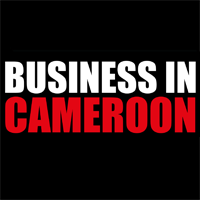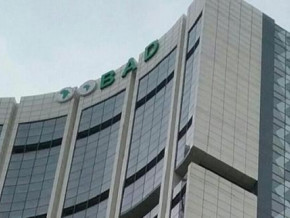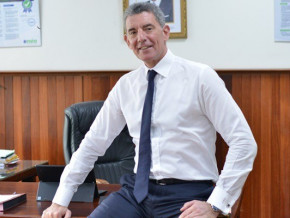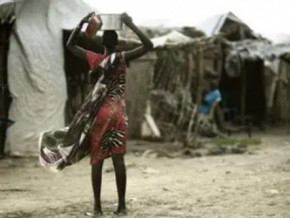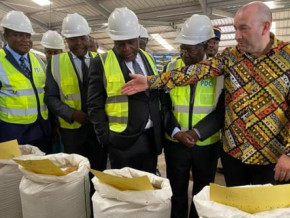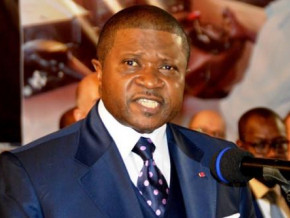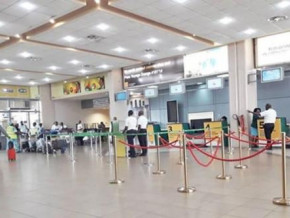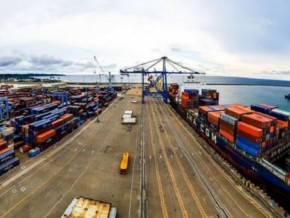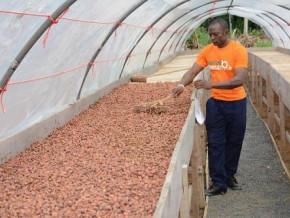
Emmanuel Bonde: “Cameroon’s sub soil is rich, even if only 40% has been explored”
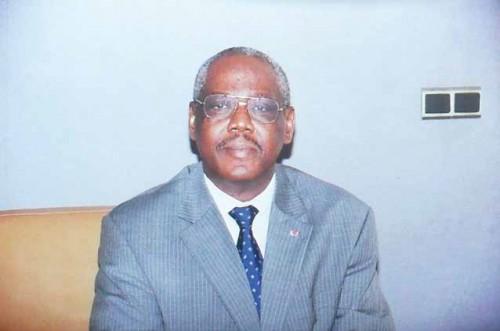
(Business in Cameroon) - The Minister of Mines, Industry, and Technological Development presents the mining potential of Cameroon.
Business in Cameroon: What is the mining potential of Cameroon?
Emmanuel Bonde: Let me first of all thank you for the opportunity you have given to us to talk about activities and projects in our Ministry. Nature has endowed our country with a huge and varied mining potential. Many experts have said that Cameroon is a geological promised land. This sector, excluding oil is a valuable lever for economic recovery and a real axis of the government political struggle against poverty.
In the past few decades, research has helped to highlight important minerals, sometimes at a world class level. These include: iron in Mbalam and Kribi, bauxite in Ngaoundal, Minim Martap Fongo and Tongo, Lomié’s nickel-cobalt, titanium in Akono-linga, tin in Mayo Darla, uranium in Poli and Lolodorf as well as gold and diamonds in the Eastern Region.
In summary, the following deposits are explored and developed: three Bauxite deposits (Ngaoundal, Minim-Martap, Fongo-Tongo), two Iron deposits (Mbalam in the east and the Udders Kribi) deposits of Nickel-Cobalt and Manganese (Lomié), Uranium (Poli and Lolodorf), Gold (Batouri, Bétaré-Oya, Bindiba), Diamond (Mobilong) and Tin (Mayo Darla). With this potential, Cameroon can avoid impoverishing the state and its population, but rather use it as a lift to sustainable development.
BIC: What are the mineral resources of Cameroon that could interest investors?
EB: Mining in Cameroon represents 40% of national resources. The geology of Cameroon counts substances such as gold, diamonds, cobalt / nickel, manganese, iron, uranium, bauxite, petroleum (oil, natural gas), sapphire etc. These are some resources that may be of interest to foreign investors.
The sub soil of Cameroon is rich, even if only 40% has been explored. Let me use this platform to appeal to companies that have an interest in our country that a huge potential exists and is just waiting to be exploited.
BIC: How many licenses have been awarded in Cameroon and for which minerals?
EB: Following the April 16, 2001 Mining Code Law and its decree of implementation, Cameroon which had virtually no mining exploration licenses and currently has 160 research licenses and five exploitation permits i.e. two exploitation licenses for minerals namely nickel, cobalt and manganese from Nkamouna to Lomié and the other for diamond in Mobilong. The other three licenses were granted for marble.
BIC: What are the minerals that are already being exploited in Cameroon?
EB: Apart from useful substances like marble and limestone, only two exploitation licenses for industrial mining have been issued to GEOVIC Cameroon in 2003 for cobalt and nickel and C & K Mining in 2010 for diamond. The actual exploitation has not yet started, research are ongoing to determine the quality of the deposits as well as the technology to be adopted.
BIC: With 160 exploration licenses, there are very few exploitation licenses. What is the problem?
EB: The provisions of Articles 60 and 65 in the mining code law clearly define the composition of application files for the award of exploration permits and licenses respectively. First, the applicant must comply with the administrative procedures to obtain a license. Then, it should be noted that researching can take a long time.
We must make every effort to determine the amount of the deposit and there are other technical aspects. We must carry out a feasibility study and there is also accompanying infrastructure project to build.
Finally, there is, of course, the thorny issue of funding, you cannot ignore that mining projects require substantial financial resources for their implementation. Mining is not like agriculture, it takes time and patience. The government on its part also takes all the steps to protect the interests of the people of Cameroon.
BIC: Are there other areas where we can find diamonds in Cameroon?
EB: It is in the south-eastern part close to the border with the Central African Republic, specifically in Mobilong, Batouri and Yokadouma. The presence of diamonds in Moloundou is not yet confirmed, but there are clues. But as I have stated previously, the Cameroonian subsoil is explored only at 40%. So to date, we cannot say exactly the amount of diamonds in the country.
BIC: To date, what is the real diamond potential of Cameroon?
EB: You cannot take the risk of engaging in rhetoric, the committee put in place to conduct studies on the real potential of our alluvial diamonds must present its findings, and it is at this level that we could give reliable figures. As for the quantities which are in the rock, the evaluation process is in progress. Summarily, it should be noted that the diamond potential of Cameroon is still awaiting evaluation by experts.
BIC: What is the gas potential of Cameroon and which companies will exploit it?
EB: The gas potential of Cameroon is estimated at 500 billion cubic meters and proven quantities are estimated at 115 billion cubic meters. The President of the Republic promulgated Law No. 2012/006 on gas code on April 19, 2012. Just like the old law, the new gas code governs the downstream gas sector which includes: activities of transmission, distribution, processing, storage, import, export and sale of natural gas and its derivative products in the national territory.
This new law has so many special tax incentives, “to accompany gas projects and investments that have considerable expected economic benefits.” Remarkable advances are underway in implementing gas projects. These include the proposed gas field development by Rodeo Development Ltd in Logbaba, the project to supply gas to the Bipaga gas plant in Kribi and the construction of a natural gas liquefaction plant at Mboro in Kribi.
BIC: If given a lot of investors to select from, what kind would Cameroon like to have in the mining sector?
EB: The Cameroon encourages investment, because it is a necessary factor for the revival of the economy to achieve the objectives found in the Growth and Employment Strategy Paper (GESP). This is one of the reasons why the Head of State, His Excellency Paul Biya, has ordered the writing of the industry’s codes of investment. Today, there is even a single code that is in preparation. Investment remains low in our country, which is why it is imperative to develop this single code with incentives that will focus on investment rather than on general industry. All sectors are covered in the GESP. Emphasis will be placed on the processing of local raw materials, scientific research, technology and training, SMEs, exports, etc. To this end, all investors who specialize in these areas and many more, are welcomed in Cameroon.
BIC: With such enormous potential, investors will certainly be interested in Cameroon, what kind of guarantees can you give them?
EB: In view of the great resources available in our country, we are open to all proposals. In all economic sectors, the state has provided incentives for investment. The mining and industrial sectors are no exception to the rule. Wishing to establish a relationship based on trust and mutually beneficial partnership with all investors who wish to do business. Cameroon offers through its investment policy, attractive incentives to businesses in order to improve the investment rate, to guarantee the security of enterprises and to enhance their competitiveness.
Moreover, Cameroon is at the centre of Africa with a thousand possibilities, among others: geographical location-bordering the Gulf of Guinea has become a strategic issue, a country of contrasts, diversity and above all a remarkable stability since thirty years. With these significant assets adds among other things: a population of twenty million people, literate, industrious, competent and integrated at the heart of large economic blocks like the CEMAC countries, the CEEAC and Nigeria.
Interview by Beaugas-Orain Djoyum
Mags frontpage
- Most read 7 days
- shared 1 month
- read 1 month
